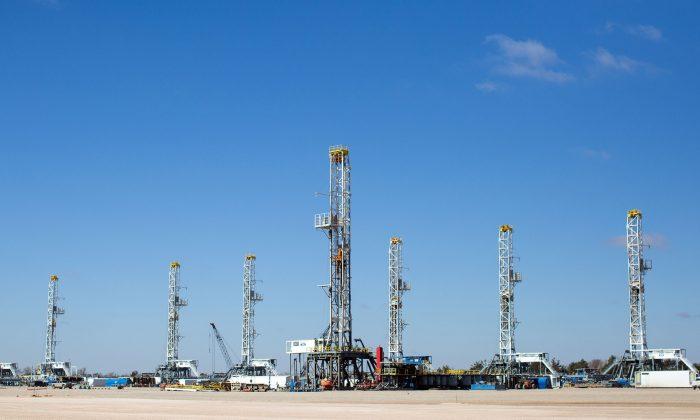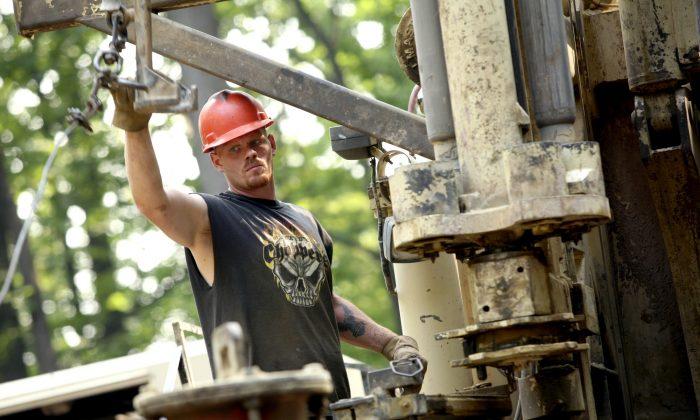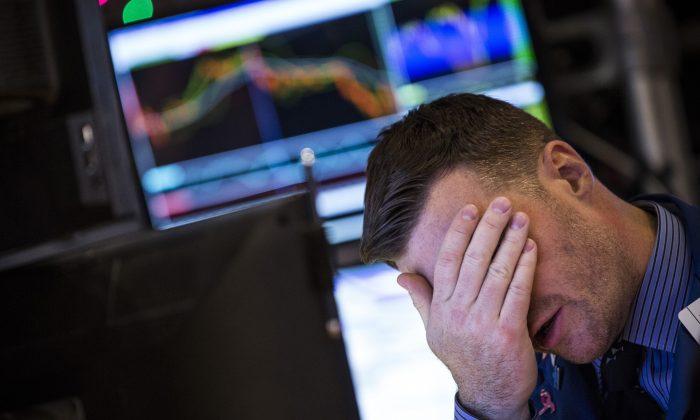NEW YORK—Maurice “Hank” Greenberg, who built up American International Group (AIG) into a leading global insurance company during his 35 years running the company, pinned the blame on his successors for the company’s dramatic fall.
Testifying in front of the U.S. House Oversight Committee on Tuesday, Greenberg said the actions of his successors—Martin Sullivan and Robert Willumstad—caused billions of dollars in losses and eventually forced AIG to seek an $85 billion federal bailout.
Greenberg, a Korean War veteran, was ousted as CEO of AIG in March 2005 after former New York Attorney General Eliot Spitzer accused Greenberg and the firm of accounting and securities fraud. All charges were subsequently dropped after an extensive investigation.
Sullivan was appointed CEO until June 2008, when Willumstad took over the position.
“Today, the company we built up over almost four decades has been virtually destroyed,” Greenberg said in a written testimony. “The enormous drop in AIG’s share price in recent months has affected millions of Americans who own AIG stock directly or indirectly, including retirees and participants in public pension plans.”
Greenberg defended the company’s insurance business, calling it “fundamentally strong.”
He blames AIG’s fall on a division of the company—AIG Financial Products (AIGFP)—which traded derivatives and hedges.
According to Greenberg, AIGFP had certain controls in place that were subsequently broken after he left the company. In addition, underwriting of credit default swaps on subprime CDOs exploded after Greenberg’s departure.
“AIGFP reportedly wrote as many credit default swaps on collateralized debt obligations, or CDOs, in the nine months following my departure as it had written in the entire previous seven years combined,” Greenberg said.
“Reports indicate that the risk controls my team and I put in place were weakened or eliminated after my retirement.”
Prior to the Fed’s bailout of AIG, Greenberg owned 12 percent of the firm.
All three former executives faced intense questioning from Congressional lawmakers over millions of dollars in bonuses and compensation they took from AIG.
While Greenberg placed the blame on his successors Sullivan and Willumstad, Sullivan cited an accounting rule—called FAS 157—for AIG’s woes.
The accounting rule requires all financial institutions to report, every quarter, their financial holdings at the market value, or the price of such assets if they were to be sold on the open market. Companies must report assets at market value regardless of their intention to sell such assets.
When the credit market dried up, the market value of many credit securities plummeted, leaving companies to report the deflated values on their financial statements and writing off losses.
“In a distressed market where assets cannot be readily sold, companies are forced to declare the value of those assets at fire-sale prices,” Sullivan said in his testimony. “Just last week, the SEC made changes with respect to the application of FAS 157 when entire markets stop functioning. Of course, AIG did not have the benefit of this guidance during my tenure.”
Because of the accounting rule, “AIG had booked $50 billion of unrealized losses on credit default swaps and on declines in the value of mortgage related securities held in its investment portfolio,” Willumstad said to the Committee.
The former executives said that such unrealized losses forced credit rating companies to downgrade the ratings of AIG, as well as other financial institutions such as Lehman Brothers. The downgrades, along with an inability to raise capital in the current market environment, created a liquidity problem at AIG.
Within a few days, Greenberg watched the company he built over a lifetime crumble.
“I’ve lost my entire net worth, literally my entire net worth,” Greenberg said on ABC’s Good Morning America on Sept. 17. “I worked 40 years building the greatest insurance company in history, one that everyone in the world envied—who was in this industry.”
According to ABC, analysts believe he lost around 95 percent—roughly $3 billion—of his fortunes.
“I'll get by,” he said on the show, “but my heart goes out for the thousands and thousands of employees and their families who are shareholders, and not only in the United States but worldwide.”
“When I left AIG, the company operated in 130 countries and employed approximately 92,000 people,” Greenberg said in his testimony.
“AIG had a market capitalization of $170 billion and its stock traded at $64 a share in March 2005.”
Currently, AIG had a market capitalization of under $10 billion, and its stock price is trading around $3.50.
Testifying in front of the U.S. House Oversight Committee on Tuesday, Greenberg said the actions of his successors—Martin Sullivan and Robert Willumstad—caused billions of dollars in losses and eventually forced AIG to seek an $85 billion federal bailout.
Greenberg, a Korean War veteran, was ousted as CEO of AIG in March 2005 after former New York Attorney General Eliot Spitzer accused Greenberg and the firm of accounting and securities fraud. All charges were subsequently dropped after an extensive investigation.
Sullivan was appointed CEO until June 2008, when Willumstad took over the position.
“Today, the company we built up over almost four decades has been virtually destroyed,” Greenberg said in a written testimony. “The enormous drop in AIG’s share price in recent months has affected millions of Americans who own AIG stock directly or indirectly, including retirees and participants in public pension plans.”
Greenberg defended the company’s insurance business, calling it “fundamentally strong.”
He blames AIG’s fall on a division of the company—AIG Financial Products (AIGFP)—which traded derivatives and hedges.
According to Greenberg, AIGFP had certain controls in place that were subsequently broken after he left the company. In addition, underwriting of credit default swaps on subprime CDOs exploded after Greenberg’s departure.
“AIGFP reportedly wrote as many credit default swaps on collateralized debt obligations, or CDOs, in the nine months following my departure as it had written in the entire previous seven years combined,” Greenberg said.
“Reports indicate that the risk controls my team and I put in place were weakened or eliminated after my retirement.”
Prior to the Fed’s bailout of AIG, Greenberg owned 12 percent of the firm.
All three former executives faced intense questioning from Congressional lawmakers over millions of dollars in bonuses and compensation they took from AIG.
Accounting Rule Blamed
While Greenberg placed the blame on his successors Sullivan and Willumstad, Sullivan cited an accounting rule—called FAS 157—for AIG’s woes.
The accounting rule requires all financial institutions to report, every quarter, their financial holdings at the market value, or the price of such assets if they were to be sold on the open market. Companies must report assets at market value regardless of their intention to sell such assets.
When the credit market dried up, the market value of many credit securities plummeted, leaving companies to report the deflated values on their financial statements and writing off losses.
“In a distressed market where assets cannot be readily sold, companies are forced to declare the value of those assets at fire-sale prices,” Sullivan said in his testimony. “Just last week, the SEC made changes with respect to the application of FAS 157 when entire markets stop functioning. Of course, AIG did not have the benefit of this guidance during my tenure.”
Because of the accounting rule, “AIG had booked $50 billion of unrealized losses on credit default swaps and on declines in the value of mortgage related securities held in its investment portfolio,” Willumstad said to the Committee.
The former executives said that such unrealized losses forced credit rating companies to downgrade the ratings of AIG, as well as other financial institutions such as Lehman Brothers. The downgrades, along with an inability to raise capital in the current market environment, created a liquidity problem at AIG.
Fortunes Lost, Legacy Battered
Within a few days, Greenberg watched the company he built over a lifetime crumble.
“I’ve lost my entire net worth, literally my entire net worth,” Greenberg said on ABC’s Good Morning America on Sept. 17. “I worked 40 years building the greatest insurance company in history, one that everyone in the world envied—who was in this industry.”
According to ABC, analysts believe he lost around 95 percent—roughly $3 billion—of his fortunes.
“I'll get by,” he said on the show, “but my heart goes out for the thousands and thousands of employees and their families who are shareholders, and not only in the United States but worldwide.”
“When I left AIG, the company operated in 130 countries and employed approximately 92,000 people,” Greenberg said in his testimony.
“AIG had a market capitalization of $170 billion and its stock traded at $64 a share in March 2005.”
Currently, AIG had a market capitalization of under $10 billion, and its stock price is trading around $3.50.






Friends Read Free